Cape Verde’s islands dish up all kinds of cruise experiences through their different ports.
Swing by Mindelo and you’ll dock at Porto Grande, the biggest port facility around. Over in Praia, the capital city offers a handy terminal right where you need it.
If you’re hitting Porto Novo, grab a tender boat – trust me, those jaw-dropping landscapes make it worth the extra step.
Beach lovers should keep an eye out for Boa Vista and Sal, where gorgeous stretches of sand wait just beyond their ports.
Every island throws something different at you – maybe you’ll tackle a volcano hike or wander through old colonial streets.
Check out the breakdown below to nail the details on each port’s setup and the cool stuff nearby.
Mindelo (São Vicente) Cruise Ship Port Guide

Heading to Cape Verde on a cruise? Porto Grande on São Vicente Island is your gateway – it’s the biggest seaport in the archipelago with decent cruise facilities and the basics covered.
You’ll hit the UTC-1 time zone when you arrive. During high season (December-April), the port gets busy with over 3,000-passenger ships dropping anchor each month. If you’re sailing in April 2025, watch for Costa Favolosa and Mein Schiff 3 sharing the harbor.
Once you step off the ship, you’re in the perfect spot to check out the Torre de Belem replica, chill at Laginha Beach, or hop on a ferry to Santo Antão for some awesome volcanic hikes with your shipmates.
Praia (Santiago) Cruise Ship Port Guide
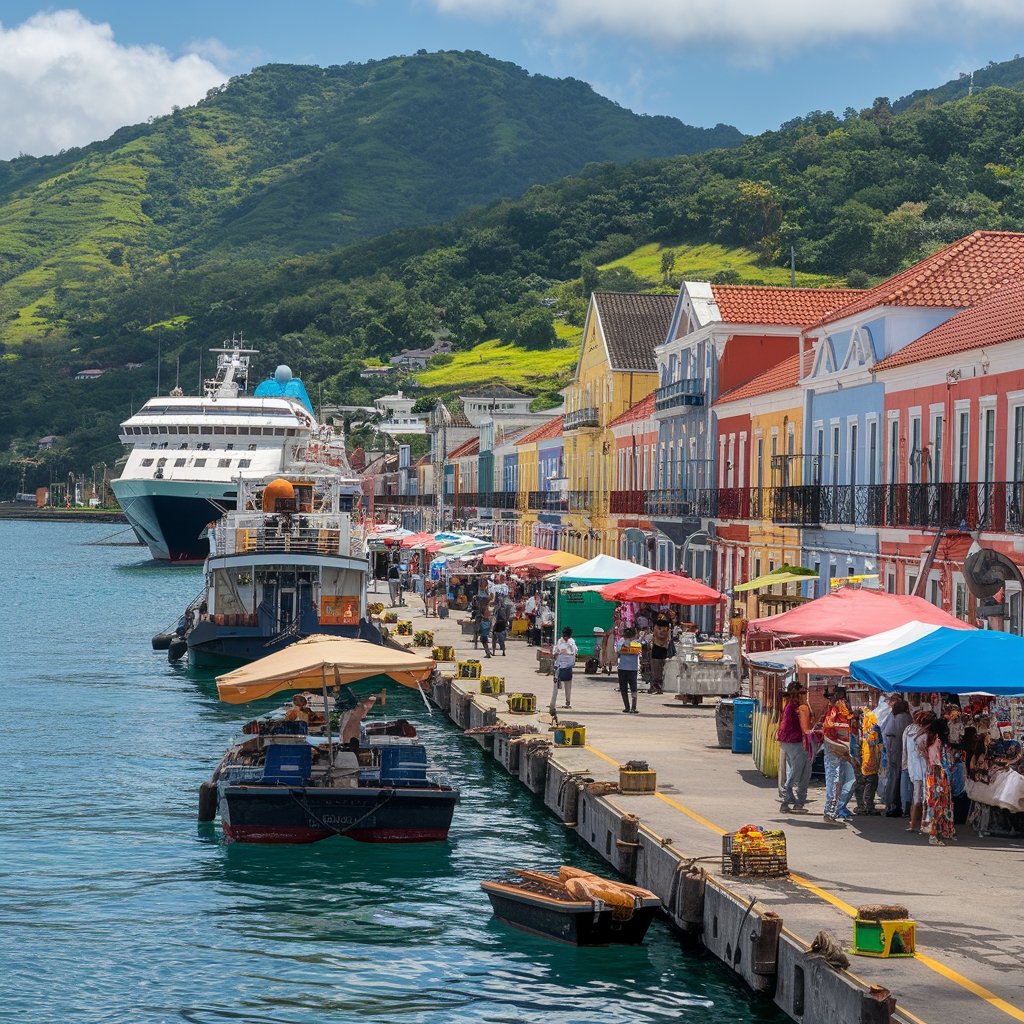
Cruising into Praia? You’ll dock right at Santiago Island‘s main port – this is Cape Verde’s capital city after all! The 355-meter passenger terminal has got you covered with shops and facilities, and hey, no need to mess with those tender boats.
The busy season runs April through November when big names like Costa and Viking regularly stop by. Most ships hang around 8-12 hours, giving you plenty of time to check out Praia’s Plateau district, just a quick 1km shuttle ride away.
While you’re here, try hiking up Pico d’Antonia for amazing views or wander through the UNESCO-listed Cidade Velha. Need to get around? Just grab one of the taxis waiting at the terminal for your island adventures.
Porto Novo (Santo Antão) Cruise Ship Port Guide
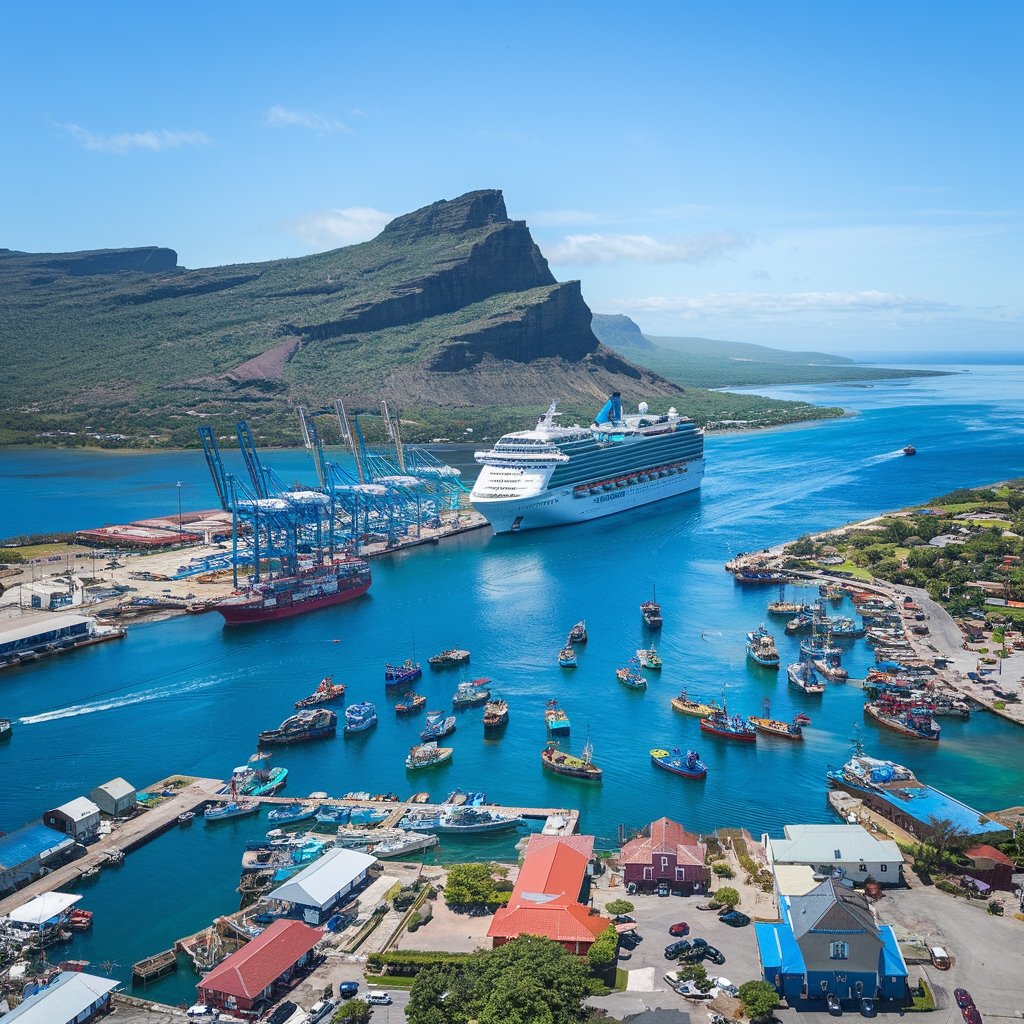
Porto Novo (Santo Antão) Cruise Ship Port Guide
Forget Praia’s fancy pier – Porto Novo keeps it real. You’ll drop anchor offshore and hop on tender boats to reach land, where there’s not much in the way of terminal facilities – just the basics.
This stop is all about nature’s showstoppers. Get your hiking boots dirty in the green paradise of Paúl Valley, check out the massive Cova Crater, or wander through authentic villages like Ribeira Grande. And seriously, try the local grogue (rum) – it’s a must!
Getting around? Grab a taxi or squeeze into a shared minibus (aluguer) with the locals. Ferries run to São Vicente if you’re island-hopping. Bring cash – euros or escudos – since ATMs are as rare as rainy days here. Speaking of which, visit during the dry season (November to June) to avoid getting soaked.
Boa Vista Cruise Ship Port Guide
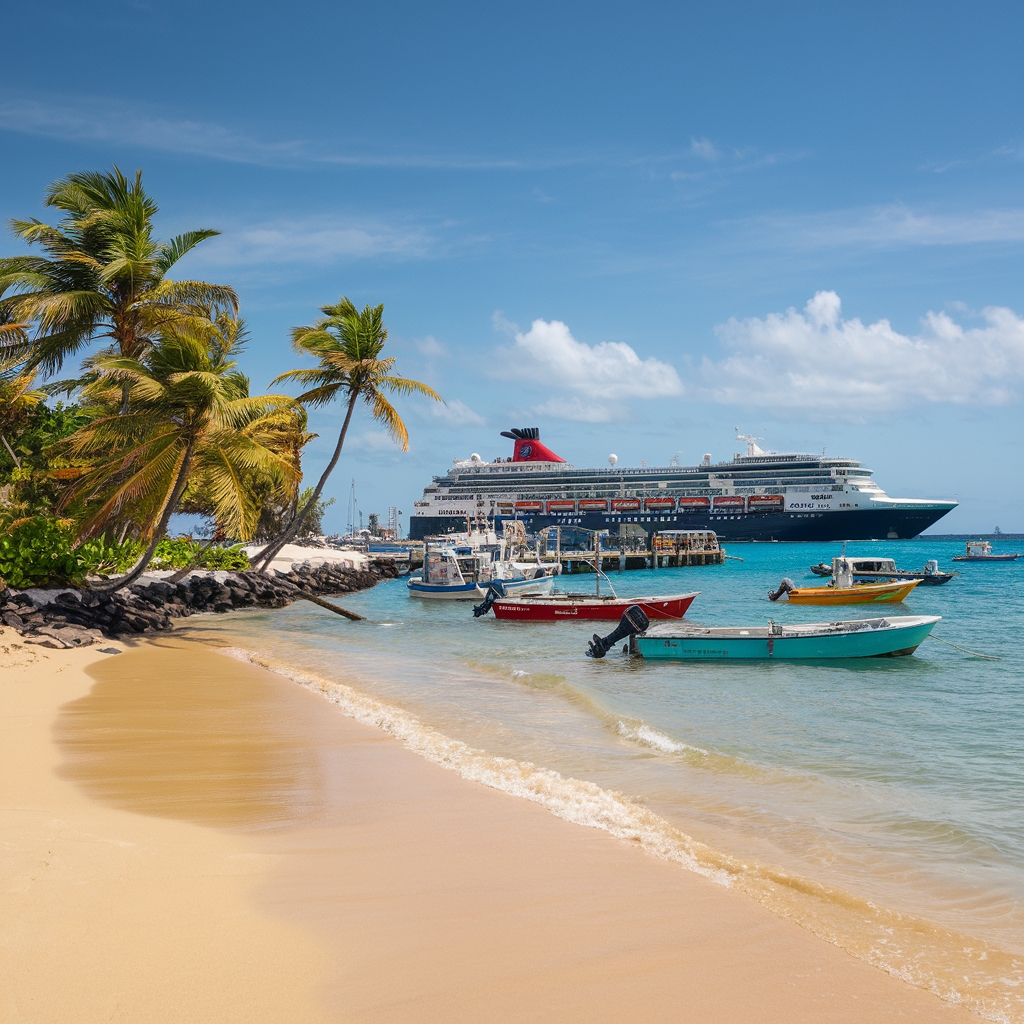
Boa Vista Cruise Ship Port Guide
Sitting at the far eastern edge of Cape Verde, Boa Vista is a slice of paradise with golden sand dunes that seem to go on forever and beaches that’ll take your breath away.
Your ship pulls into Sal Rei, and you can easily walk right into this cute little capital town. From there, you’ve got the stunning 18km Santa Monica Beach at your fingertips, or if you’re feeling adventurous, hit up the Viana Desert for some wild sandboarding and ATV rides that’ll get your heart racing.
Make sure to check out the pottery makers in Rabil Village doing their thing the old-school way, or wander around the crumbling São João Baptista fortress from the 1700s. Bird nerds will love spotting the feathered locals at Curral Velho Protected Area.
For the best experience, drop by between November and June when the weather’s just right for exploring Boa Vista.
Sal Cruise Ship Port Guide
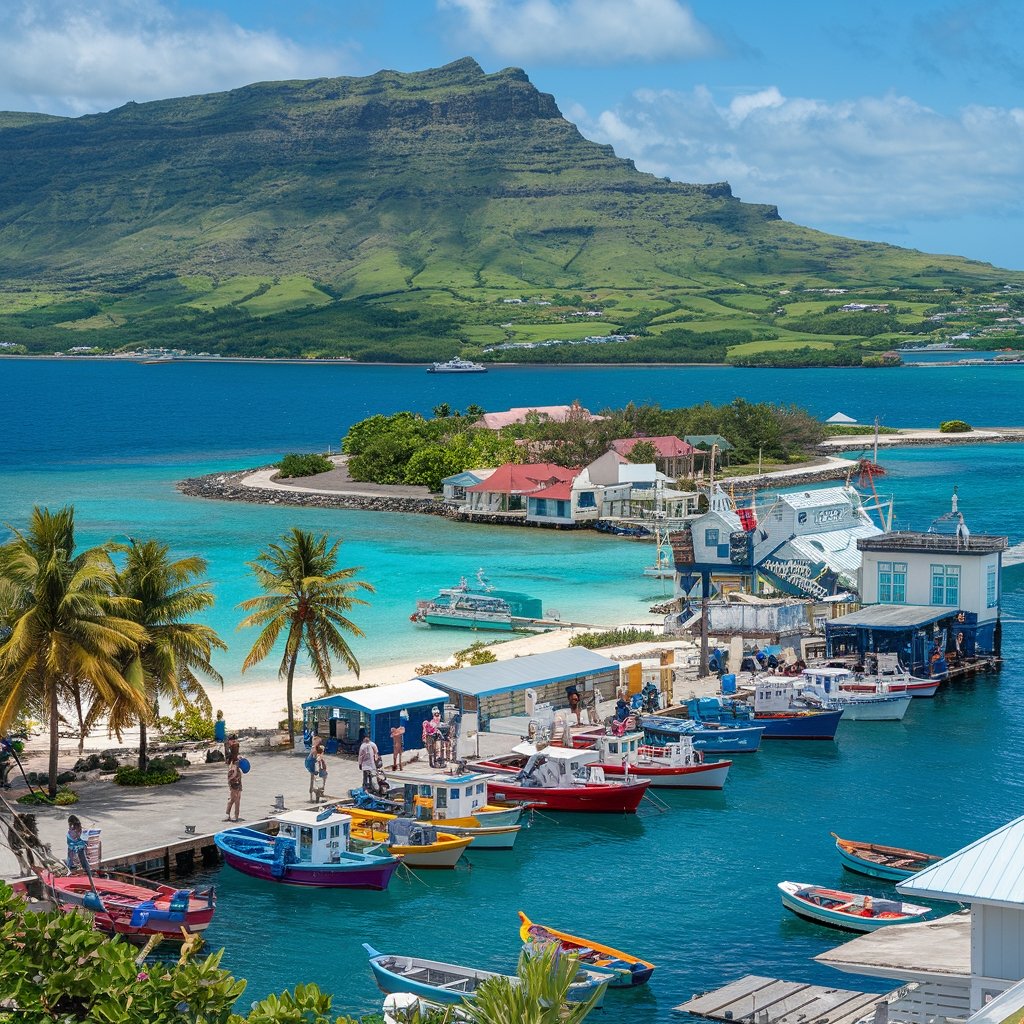
Shifting from Boa Vista’s gorgeous sandy dunes, let’s check out Sal – another gem in Cape Verde’s collection. Your cruise ship typically pulls into either Palmeira Port on the west side or Santa Maria down south.
Palmeira’s super convenient – just a quick 5-minute stroll gets you into town. Santa Maria’s a bit further out, so you’ll need to grab a taxi or hop on the shuttle. Both spots give you easy access to Espargos and the main airport (Amílcar Cabral International).
While you’re here, you’ve gotta see the Pedra de Lume salt crater – it’s pretty wild. Also worth your time is Buracona with its crazy “blue eye” cave formation, and of course Santa Maria’s killer beaches. Taxis are your easiest way to get around – expect to pay about CVE500 for a ride from Espargos.
São Nicolau Cruise Ship Port Guide
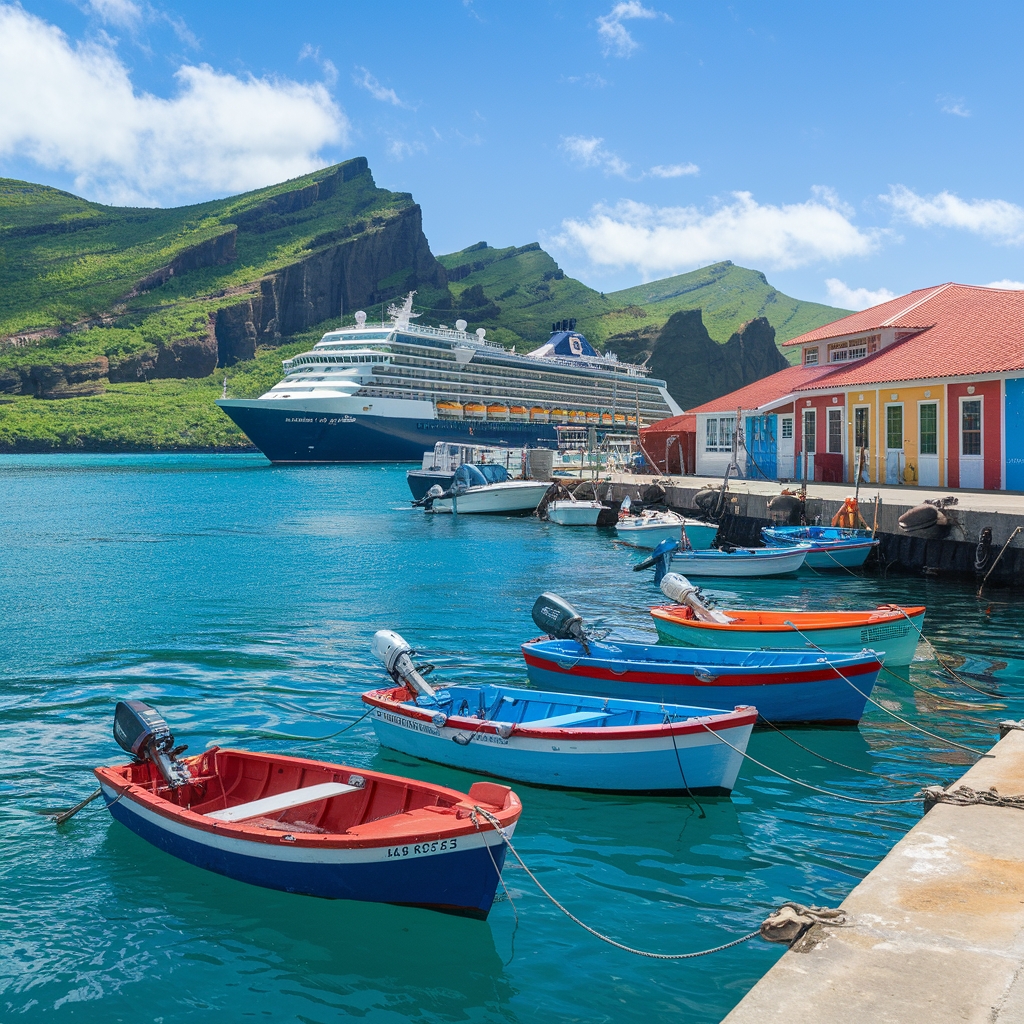
São Nicolau Cruise Ship Port Guide
Skip the crowded Cape Verde hotspots and drop anchor at São Nicolau for a real island adventure. Your ship will dock offshore at Tarrafal, where you’ll hop on a tender boat to reach this sweet little port town that’s kept its local vibe intact.
Wander through Ribeira Brava‘s old-world streets, sweat it out on a hike up Monte Gordo for jaw-dropping views, or just chill on the volcanic beaches with water so clear you’ll think you’re dreaming. After exploring, grab some authentic Cape Verdean grub at one of the seaside restaurants – trust me, you’ll be glad you did.
Most cruises swing by during the dry months (November through June). Bring euros along with escudos, and if you really want to see what this 388 km² island is all about, rent a 4×4 and hit the dusty backroads.
São Filipe (Fogo) Cruise Ship Port Guide
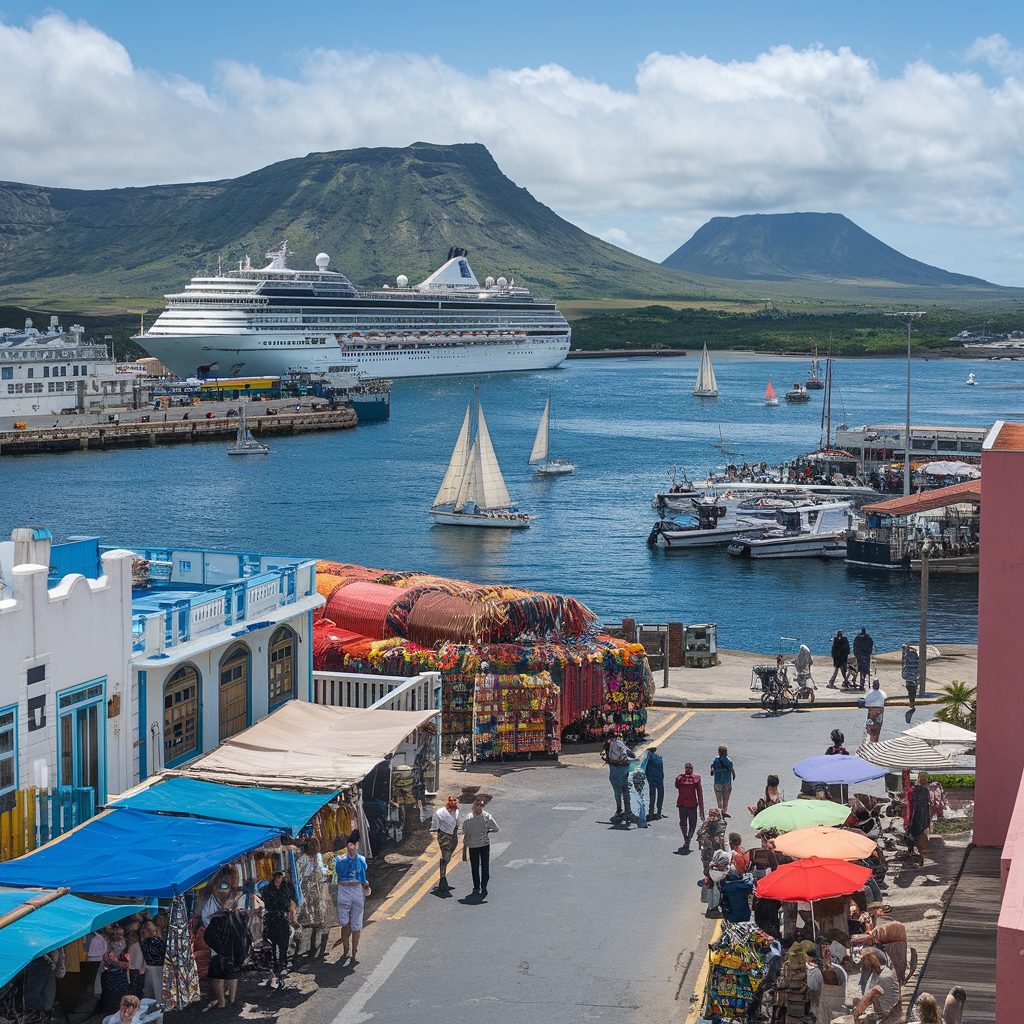
São Filipe (Fogo) Cruise Ship Port Guide
Adventure and volcanic thrills await at São Filipe, your gateway to Fogo Island‘s jaw-dropping landscapes. When your ship docks at Vale de Cavaleiros, you’ll hop on shuttle boats to reach the actual town, which sits about 4 km north.
Taxis are your go-to for getting around – don’t bother looking for buses or trains because there aren’t any! The town center is pretty walkable, so stretch your legs and check out Casa Da Memoria and the old-school 19th-century cathedral while you’re there.
Whatever you do, don’t skip Chã das Caldeiras in Fogo Natural Park or a hike up Pico do Fogo volcano – that’s the whole point of coming here! Try the weird (but good) volcanic-soil wines and knock back some local grogue liquor if you’re brave.
Bring euros alongside the local Cape Verdean escudos, and try to visit during dry season (November-June) unless you enjoy getting soaked.
Maio Cruise Ship Port Guide
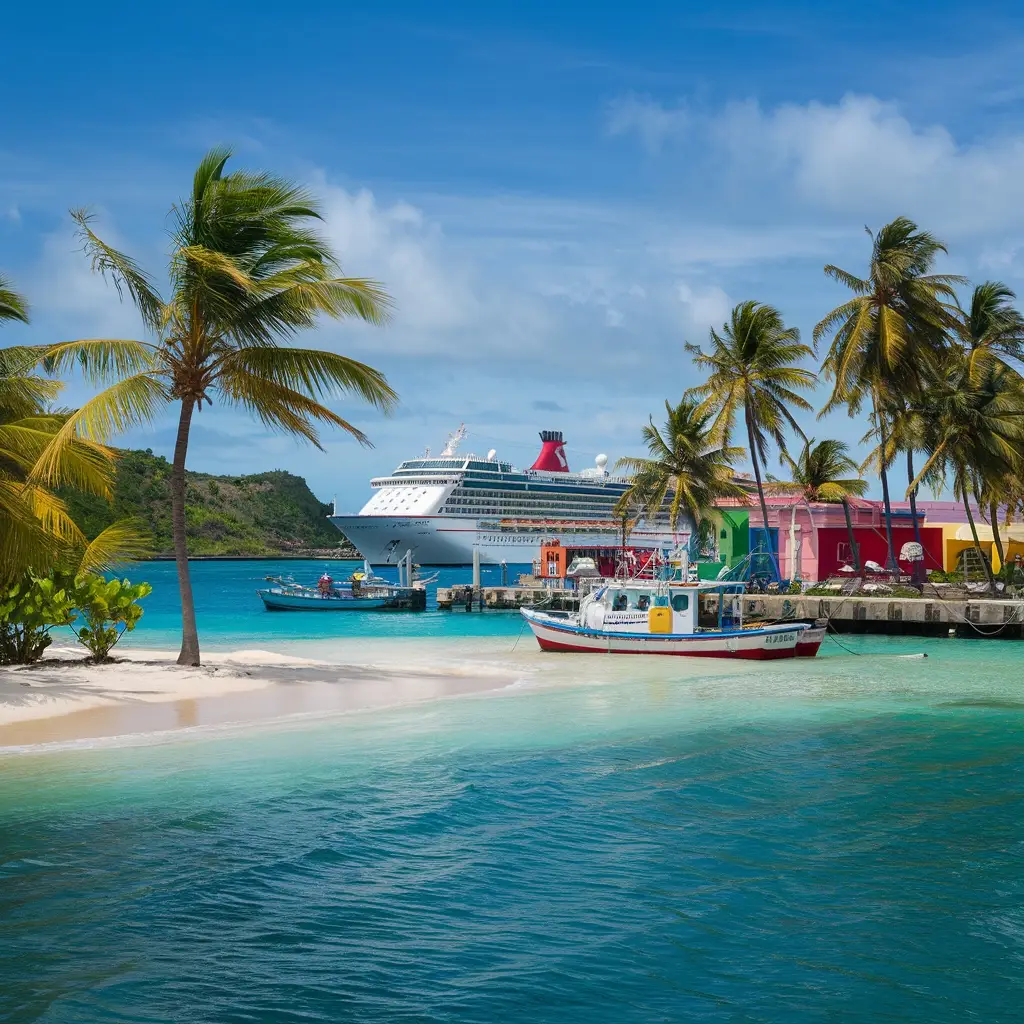
Looking for a change from Fogo’s volcanic drama? Maio’s your spot. This laid-back island hits you with gorgeous untouched beaches and real Cape Verdean life that hasn’t been overrun by tourists yet.
Your cruise will probably drop anchor at Cidade do Maio port, and you’ll hop on tender boats to reach shore. Once you’re there, wander through Vila do Maio’s old colonial buildings, chill out on Praia Real’s white sandy beaches, or hike up Monte Penoso for some killer views.
Bring euros (they work everywhere), sort out your transport early (not many options around), and get ready for the real deal – this place is off the tourist radar, so you’ll actually meet locals and experience the authentic island vibe.
Frequently Asked Questions
What Is the Best Time of Year to Cruise Cape Verde?
Don’t sweat those quick tropical downpours! Cape Verde cruising is absolutely gorgeous from October through May – you’ll soak up balmy 25-28°C temps, smooth sailing, and gorgeous blue skies. It’s the sweet spot for island-hopping with your cruise buddies and making unforgettable memories.
Do I Need a Visa for Cruise Stops in Cape Verde?
If you’re just stopping off in Cape Verde during a cruise – whether you stay on the ship or hop off for some exploring – you won’t need a visa. The only time you’ll need to bother with visa paperwork is if you’re actually ending your journey there and flying home from Cape Verde instead of continuing on the cruise.
What Currency Should I Bring When Visiting Cape Verde Ports?
Euros are your best bet when visiting Cape Verde – about 80% of vendors happily take them. Just bring actual cash with you since credit cards often don’t work well in the port areas. No need to overthink it – euros will get you through most situations just fine.
Are There Any Local Health Concerns for Cruise Passengers?
Health risks for cruise passengers are pretty minimal, but don’t forget to toss some bug spray in your bag to ward off those dengue-carrying mosquitoes. Stay hydrated, slap on plenty of sunscreen, and make sure you bring enough of your meds from home – local pharmacies might not stock what you need.
What Languages Are Commonly Spoken at Cape Verde Cruise Ports?
You’ll hear both Portuguese (the official language) and Kriolu (the local Creole dialect) when visiting Cape Verde ports. Most port workers can speak enough English to help tourists get around, and you might find some shop owners and vendors who know a bit of French or Spanish too – they’re just trying to make you feel at home during your visit.
